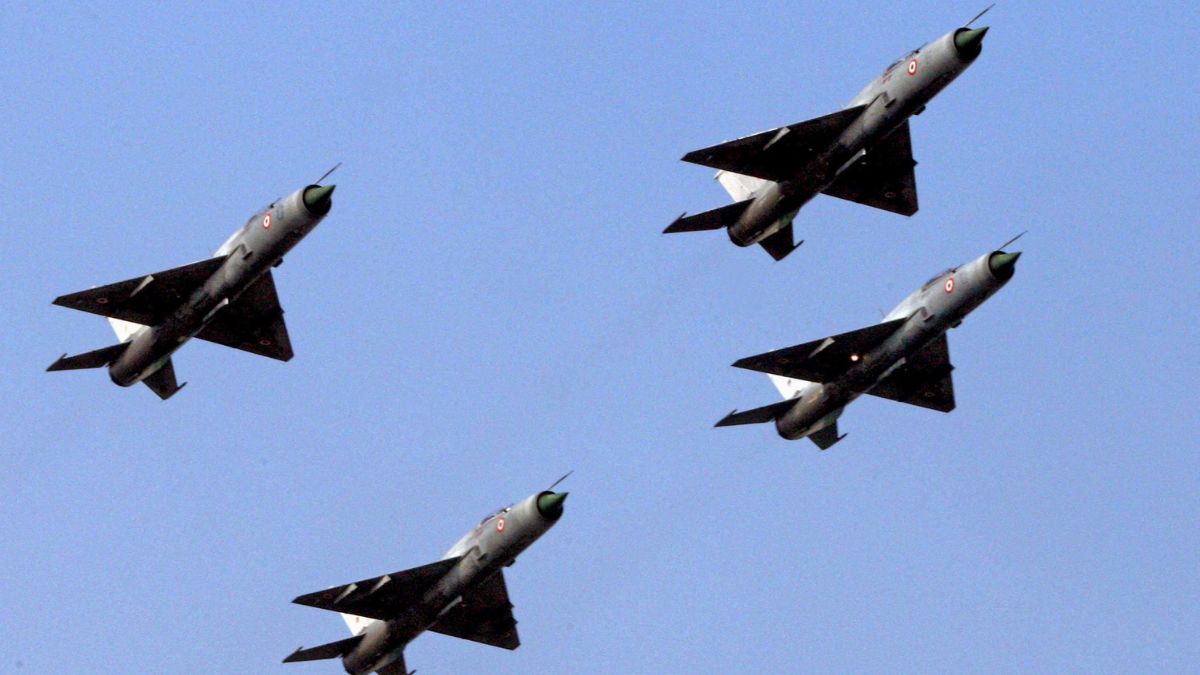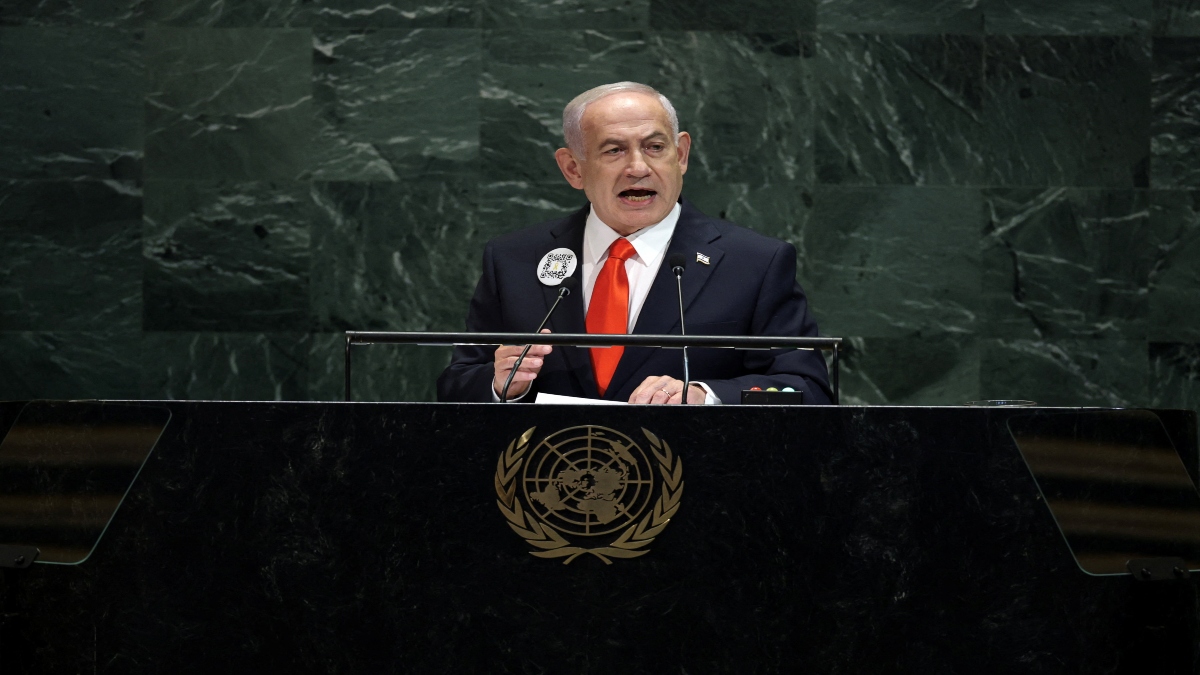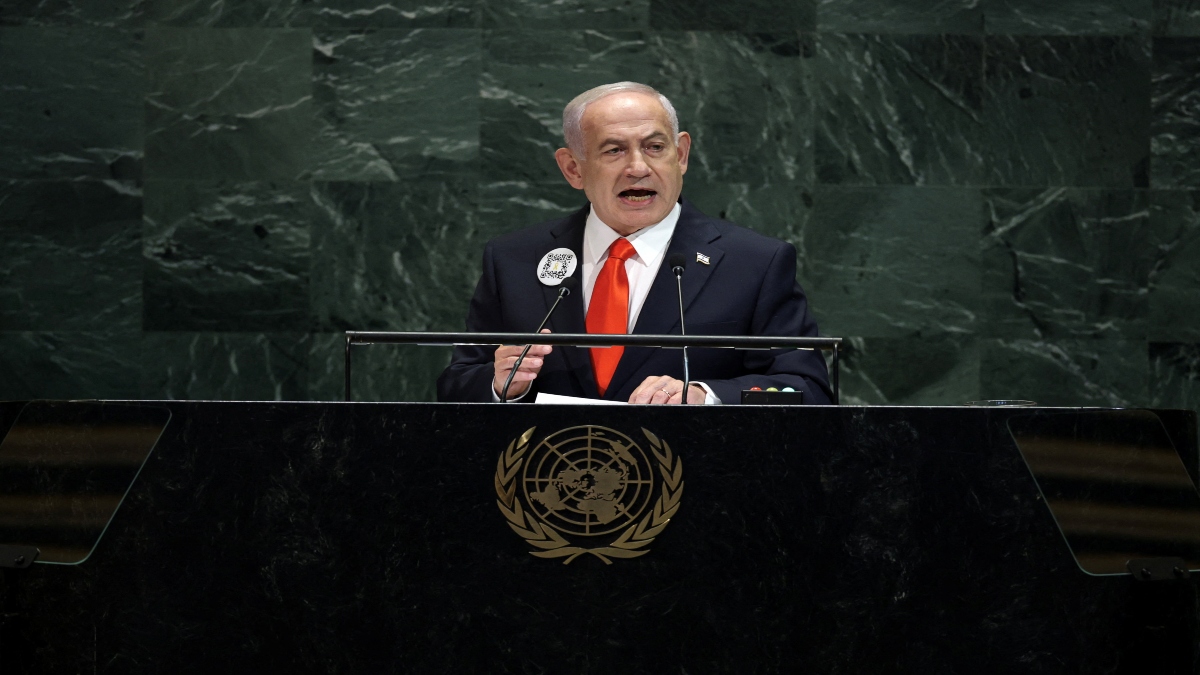India’s iconic MiG‑21 warplane will take its last flight on Friday (September 26). The Indian Air Force (IAF) is bidding adieu to the Russian-origin fighter jets, which were first inducted more than six decades ago.
The last remaining MiG-21 fighter jets will retire at a decommissioning ceremony at Chandigarh Air Force Station, the base where the aircraft was first inducted in 1963. Defence Minister Rajnath Singh, Chief of Defence Staff General Anil Chauhan, Army Chief General Upendra Dwivedi, Air Chief Marshal AP Singh and Navy Chief Admiral Dinesh K Tripathi are likely to be present at the event.
The MiG‑21s have a chequered history in India. As the fighter jets take their last flight, we take a look at their journey.
Let’s take a closer look.
MiG-21s soar Indian skies
In the early 1960s, India began seeking a supersonic jet. With the United States and the United Kingdom showing reluctance in providing the warplanes to India, the Soviet Union came into the picture.
India signed an agreement with the Union of Soviet Socialist Republics (USSR) in August 1962. The warplanes, India’s first supersonic fighter, were inducted into the IAF in 1963 as the MiG-21 Type-74. Dubbed the “First Supersonics", these fighter jets were armed with two K-13 heat-seeking missiles and basic infrared homing seekers.
The slim MiG-21s flew at a breakneck speed and were super fast at altitude.
The state-run Hindustan Aeronautics Limited (HAL) began license production of the fighter jets in the mid-1960s. The modification of the Type-77 made it capable of air-to-ground strikes. It was also equipped with a KA-60 camera for a photo-reconnaissance role.
Russians later offered India the MiG-21 M, also known as the ‘Type 96’, featured “radar (RP-21), an internal 23 mm Gasha cannon and a combination of external tanks, bombs, rockets, and K-13 missiles on the four wing pylons,” Air Vice Marshal (Dr) Arjun Subramaniam (Retired) wrote for Observer Research Foundation (ORF).
This variant was upgraded for electronic warfare in the late 1970s, carrying Swedish Chatterbox jamming pods.
The MiG-21 Bis were inducted into the IAF in the late 1970s. In 2001, the MiG-21 Bison joined the IAF fleet. These jets featured a Russian radar, Israeli electronic warfare systems, a French inertial navigation system, and an Indian radar warning receiver. Its arsenal included the R-77 and R-73 missiles, KH-31 anti-radiation weapons, and laser-guided bombs.
Over the years, the MiG-21 became the mainstay of IAF squadrons. More than 870 aircraft were inducted, with many built domestically by Hindustan Aeronautics Limited.
How MiG-21s fared in India’s wars
The MiG‑21 aircraft was first used during the 1965 India-Pakistan war. The single squadron (28 Squadron) that operated the fighter jet did not achieve any kills, but its performance gave the IAF crucial experience on the need to “add weaponry and expand its mission sets for greater combat effectiveness,” as per the ORF article.
During the 1971 Bangladesh Liberation War, the MiG-21 played a “critical role in rendering Tezgaon (Dhaka) airfield out of action by carrying out never-attempted-before steep glide bombing missions to crater the airstrip,” it added.
On December 14, 1971, MiG-21s and Hunters fired rocket attacks on the Government House in Dhaka, which resulted in the collapse of the Pakistan Army in East Pakistan.
“Each aircraft carried two 500kg bombs, and I flew three-to-four such missions. Taking off from Amritsar, we were inside Pakistan within 35 minutes, struck our targets 250km deep and raced back through Rajasthan - the shortest way out,” Air Marshal (retired) Prithvi Singh Brar told BBC.
The fighter jet also played a key role in the 1999 Kargil conflict.
On August 10, 1999, a MiG-21 intercepted and shot down a Pakistani Navy Atlantique maritime patrol aircraft that had entered the Indian airspace over the Rann of Kutch. The missile strike killed all 16 personnel onboard, demonstrating India’s air dominance post-Kargil.
In February 2019, after the IAF conducted strikes on terror camps in Balakot, Pakistan launched a retaliatory attack across the Line of Control (LoC). Two MiG-21 Bison jets intercepted the incoming aircraft.
It was also a MiG-21 that Group Captain Abhinandan Varthaman, then Wing Commander, flew to shoot down a Pakistani F-16 in 2019, before he was captured across the border.
‘The flying coffin’
In the early 2000s, the MiG-21 became infamous for its high crash rate.
It came to be known as “widow-maker” or the “flying coffin” due to several crashes over its six decades of service.
About 500 MiG-21s have crashed in the last 60 years, resulting in the death of 170 pilots, as per government data. More than 20 aircraft have crashed since 2010.
In 2012, the then Defence Minister AK Antony said in Parliament that more than half of the 872 MiG aircraft purchased from Russia had crashed. This led to the death of 200 persons, including 171 pilots, 39 civilians, and eight other service people.
Defence analyst Rahul Bedi told BBC that there is a lot of “misplaced nostalgia around MiG-21 because it was responsible for so many deaths”. The aircraft’s ageing airframes and stretched maintenance cycles have been blamed for the mishaps.
“MiG‑21’s biggest challenge was its engine and high landing speed, which made descents tricky on short runways and contributed to many accidents - often blamed on pilot error. Attempts to retire the fighters were repeatedly stalled by inefficiency and bureaucratic inertia,” Bedi said.
Now, the IAF is saying farewell to an iconic part of its history.
#WATCH | Chandigarh: Water salute being given to MiG-21 aircraft. The aircraft is set to retire on September 26 at a decommissioning ceremony in Chandigarh. pic.twitter.com/hFPGoaTbvI
— ANI (@ANI) September 24, 2025
In August, Air Chief Marshal AP Singh paid tribute to the MiG-21 jet with solo sorties from the Nal airbase in Rajasthan’s Bikaner. The IAF described the MiG-21 as a “warhorse that carried the pride of a nation into the skies.”
The Tejas Light Combat Aircraft Mk 1A will replace the ageing fighter in the coming years.
With inputs from agencies


)

)
)
)
)
)
)
)
)



